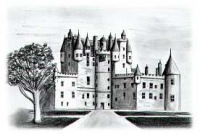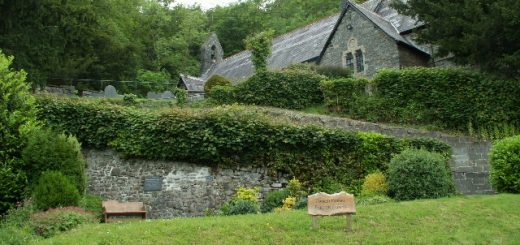The Parish Church of St Michael, Cornhill
St Michaels’ Church in Cornhill is a Grade I listed building, built by Sir Christopher Wren between 1699 and 1672 following the destruction of the earlier medieval church in the Great Fire of London. It was in this now lost medieval building that according to legend a creature was encountered by the bell ringers early in the first half of the sixteenth century.
The Church of St Michael at Cornhill was in existence before the Norman Conquest and was given to the Abbot of Evesham by a priest called Alnothus (or Alnod) in 1055. This is recorded in the Chronicle of the Abbey of Evesham. The northern part of the 1st Century AD Roman Forum is said lie under the church.
Although there are no accounts of the construction of the early church, there is a record of the steeple needing to be repaired due to it being decayed with age. This work was started on 25 September 1421.
John Stow (died 6 April 1605) historian and antiquarian was born in the Parish of Cornhill in 1525. His father, a tallow-chandler (a tallow candle maker or seller) recounted the following legend which he included in his Survey of London (seconded Edition 1603);
My father told me that on the night of St James, certain men were ringing the bells of St Michael’s, in the loft, when there arose a tempest of thunder and lightning, and a thing of an ugly shape and sight was seen to come in at the south window, and it lighted on the north. For fear whereof, all the ringers fell down and lay as dead for a time, leaving the bells to ring and cease of their own accord. When the ringers came to themselves, they found certain stones of the north window to be razed and scrat as if they had been so much butter, printed with a lion’s claw; the same stones were fastened there again, when it was repaired, and remain so to this day. I have seen them oft, and have put a feather or small stick into the hole where the claw had entered, three to four inches deep.
At the same time, certain maine Timber posts at Queen Hith were scrat and cleft from top to bottom, and the Pulpit Cross in Paul’s churchyard was likewise scrat, cleft and overturned. One of the ringers lived in my youth, whom I have oft heard to verifye the same to be true, and I have oft heard my Father to report it.
Given that Stow claimed to know one of the ringers in his youth and he was himself born in 1525, I suspect that this event was said to take place early 16th century or late 15th century. The church had a peal of five bells up to 1430, when a tenor bell was added, so at the time of the event there would likely have been enough ringers for six bells. The Great Fire of London which ravaged the city between 2 September and 5 September 1666 totally destroyed the main body of the church, leaving the tower intact. The tower was however replaced at a later date so I assume none of the marked stones mentioned by John Stow still exist.
Notable Burials:
Robert Yaxley 1540. Physician to King Henry VIII
Robert Fabyan, 1513. Author of the ‘Chronicles of England and France’.




Recent Comments